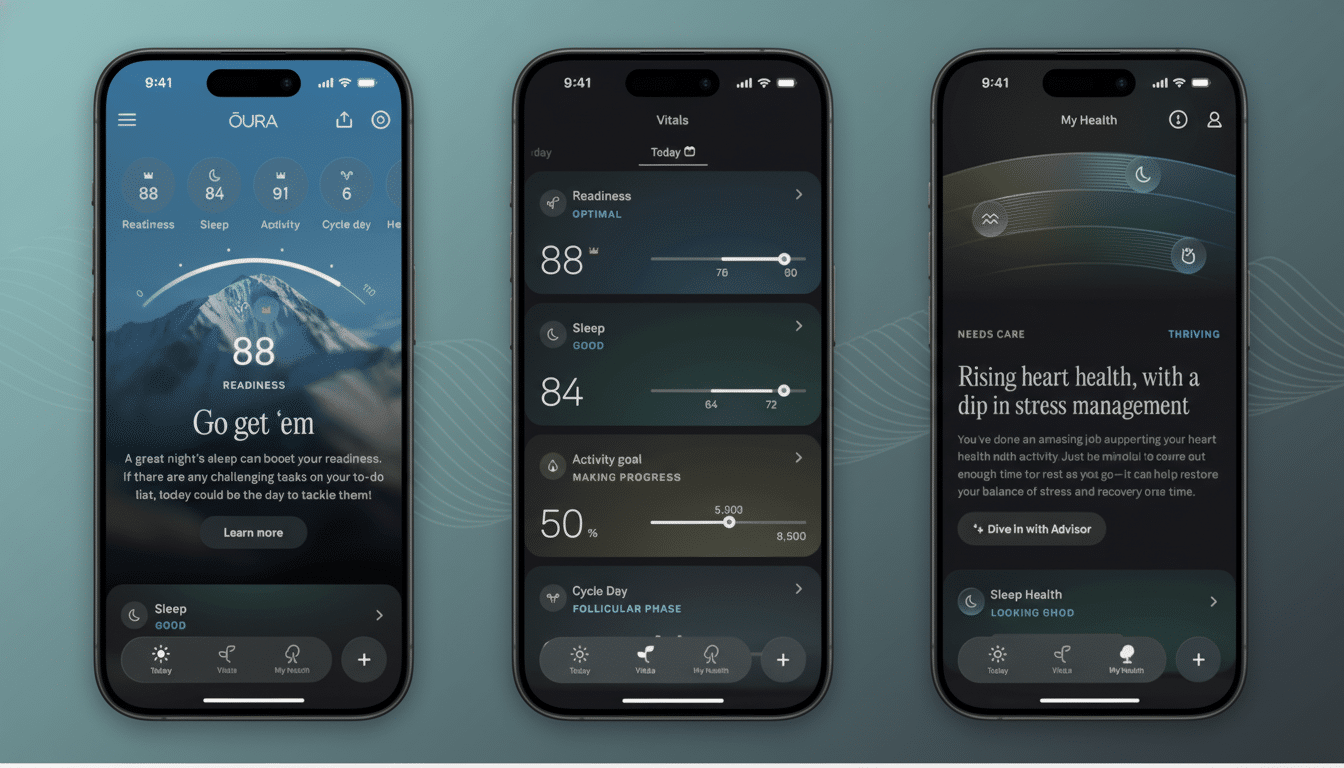Oura is introducing Cumulative Stress, a new metric intended to expose the slow build of strain that may lead to burnout. Rather than responding to a bad day, it pools a month of signals from the Oura Ring, so you can see when pressure is stealthily building up — and what to address.
What Oura’s Cumulative Stress Metric Actually Measures
Cumulative Stress doesn’t read like a real-time stress graph; instead, it takes in a 30-day view and integrates five inputs: sleep continuity, heart rate response, sleep micromotions, temperature regulation, and activity impact. Combined, they tell you how your body is managing across a span of time — not only at that instant in the race.
- What Oura’s Cumulative Stress Metric Actually Measures
- Why Cumulative Stress Is Relevant to Burnout Risk
- How to Read and Respond to Your Cumulative Trend
- How Cumulative Stress Differs From Daytime Stress
- Evidence and Practical Guardrails for Using the Tool
- How To Respond To Increased Cumulative Stress
- Related Oura app updates and longer‑term initiatives

“Sleep continuity and micromotions detect micro‑arousals and restlessness that seep in when your nervous system is revved,” she said. Heart rate responses signal a developing load strain during the day. Trends in nocturnal skin temperature may also be indicative of recovery debt or sickness. Activity impact balances training load and lifestyle exertion with your baseline.
Oura states that the model has been verified against both established research tools (such as the Perceived Stress Scale and the Copenhagen Burnout Inventory), revealing a more clinically grounded image of accumulated strain compared with what can be represented by a single score.
Why Cumulative Stress Is Relevant to Burnout Risk
Burnout rarely arrives overnight. The World Health Organization defines it as an occupational phenomenon of feeling exhausted, cynical, and less efficient. Those outcomes are the result of chronic stress that (silently) weakens sleep quality, heart rate variability, and thermoregulation long before you feel chewed up.
That’s the point where a cumulative perspective comes in handy. In its State of the Global Workplace report, Gallup finds that 40 percent of workers feel a great deal of stress on a daily basis, although most people have a distorted sense of their own limits. By monitoring slight physiological drift across weeks, the feature is designed to surface “hidden tolls” early enough — when small course corrections can still be effective.
How to Read and Respond to Your Cumulative Trend
Cumulative Stress is available in the app’s Stress Management view, where daily strain and a multi‑week trajectory are depicted. If you encounter a consistent upward trend for several weeks in a row, that’s when you should prioritize recovery — even if no single day seems extreme.
Example: A project lead squeezes in late nights, more time at the gym, and a new travel schedule. None of those days individually spike sharply. But across more than a month, sleep continuity wanes, nighttime temperature nudges higher, and heart rate responses remain elevated. The cumulative score starts to rise, indicating that it’s time for you to lower the intensity of your training, start imposing some serious work cutoffs, and protect sleep for a week or two.
Combine the trend with your Sleep and Readiness metrics. If Cumulative Stress rises rapidly while Readiness drags and sleep starts getting disrupted, you’re in classic overreach country. If stress is up but Readiness remains the same, a fuzzier reset — such as taking an extra rest day and going to bed earlier — may be plenty.

How Cumulative Stress Differs From Daytime Stress
Daytime Stress is a near‑real‑time measurement of your body’s instantaneous response to stress, primarily driven by the variability of your heart rate. It’s good for figuring out what triggers, if any, you may be encountering at the moment — meetings, caffeine, or a strenuous workout.
By contrast, Cumulative Stress is the long‑horizon lens. It smooths the noise of one rough afternoon and asks if your baseline is gradually drifting in the wrong direction. Consider it a monthly ledger balancing the strain of life with your investment in recovery.
Evidence and Practical Guardrails for Using the Tool
The approach is in line with prior research cited by the American Psychological Association that associates chronic stress with disrupted sleep architecture and cardiometabolic risk. In anchoring the metric to scales such as the Perceived Stress Scale and the Copenhagen Burnout Inventory, Oura is grounding wearable data in validated frameworks instead of just vibes.
There are limits. Sickness, alcohol, shift work, extreme heat, and jet lag can all transiently drive signals upward. Think of the score as a first‑warning compass, not a diagnosis. If you continue to feel tired or down, or have trouble performing — such as concentration problems — it is wise to consult with a clinician or mental health specialist.
How To Respond To Increased Cumulative Stress
- Decrease training load for 5–7 days and focus on zone 1–2 activity.
- Protect a consistent sleep window, eliminate screens and stimulants in the evening, and target earlier wind‑down times.
- Squeeze in batch meetings, short walks, and quick breathing exercises when Daytime Stress escalates.
- Reassess after two weeks; flattening or declines of the cumulative curve indicate that healing is beginning to keep pace.
Related Oura app updates and longer‑term initiatives
Live now is the Stress Management view, which arrives with a pared‑down Today tab designed to promote One Big Thing — a prescient nugget of wisdom formulated for the moment: sleep in the morning, activity at midday, recovery in the evening.
Cycle Insights further extends this perspective to 12 months by making projected phase predictions faster while decreasing the amount of data needed for personalized computations. Oura is also developing a Blood Pressure Profile study with regulators exploring passive indications of hypertension, with early access available through its Labs program.
Bottom line: Cumulative Stress offers Oura users an actionable early warning of burnout. It’s not going to cure your schedule, but it can push you to make better choices before fatigue becomes fallout.

